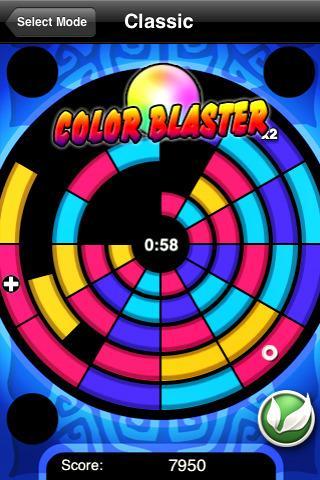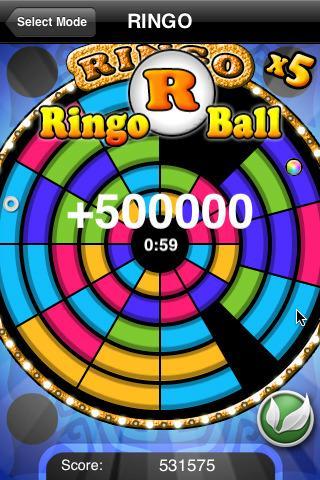- Wondering how to get Monopoly GO! free rolls? Well, you’ve come to the right place. In this guide, we provide you with a bunch of tips and tricks to get some free rolls for the hit new mobile game. We’ll …
Best Roblox Horror Games to Play Right Now – Updated Weekly
By Adele Wilson
Our Best Roblox Horror Games guide features the scariest and most creative experiences to play right now on the platform!The BEST Roblox Games of The Week – Games You Need To Play!
By Sho Roberts
Our feature shares our pick for the Best Roblox Games of the week! With our feature, we guarantee you'll find something new to play!Type Soul Clan Rarity Guide – All Legendary And Common Clans Listed!
By Nathan Ball
Wondering what your odds of rolling a particular Clan are? Wonder no more, with my handy Type Soul Clan Rarity guide.
Ring Theory Review
Match-3 games are a dime a dozen these days. This is probably true of any platform, but for the iPhone it’s even more accurate. As such it can be really hard to find a way to stand out. Naturally it’s still possible, but it just means you need to bring a super solid game to the table. Ring Theory is by no means a bad game, but it’s not really good enough to set itself apart from other offerings.

Ring Theory Review
Match-3 games are a dime a dozen these days. This is probably true of any platform, but for the iPhone it’s even more accurate. As such it can be really hard to find a way to stand out. Naturally it’s still possible, but it just means you need to bring a super solid game to the table. Ring Theory is by no means a bad game, but it’s not really good enough to set itself apart from other offerings.
The basics of Ring Theory will be familiar to anyone that’s played a match 3 game, in that the point of the game is to get 3 or more of the same colored pieces together. If you do that the pieces disappear and you score points. New pieces fall into their place and you continue on. Keep going till you run out of time. That’s pretty much the extent of it.
Here your playfield is a set of concentric rings broken up into different colored segments. You’ll use the touch screen to rotate and spin the different rings to line up different sets of colored groups, the larger the better. Some pieces have little icons on them that trigger special effects when cleared (like multiplying points or blowing up a certain portion of the board).
I was impressed with how well the touch screen worked. With a timed game like this you need the game to know which ring you’re grabbing and moving ASAP, since moving the wrong ring or at the wrong speed just loses you time. Not once in my entire time playing Ring Theory did it misinterpret my actions.
There are a few different game types included and a few more available for purchase, but they play out so similarly that I’m inclined to call foul on that one. For the most part different modes simple mean different powerups on the pieces, with casino type powers or letters and needing to spell R-I-N-G-O for bonus points.
My main issue with Ring Theory is that there were times when I didn’t feel like I was playing the game but merely watching the game play itself. Combos are so prevalent that at some point I just wanted them to stop so I could move the rings myself. Special pieces get triggered, new pieces fall into place and then immediately fall into a spot where they get scored and removed. Rinse and repeat.
Normally that really wouldn’t be a huge issue – no one complains about combos in Bejeweled – but here it just goes a bit overboard. I make one move and next thing I know it’s a crazy high combo. It’s not satisfying, and it’s hard to set anything up when you know it’s just going to get combo’d all to hell before you get to it anyway. I just never felt like I was earning the points Ring Theory was throwing at me.
All said and done, Ring Theory isn’t a bad game. It’s merely average. If this were some niche title, that would probably be fine. But in the overcrowded match-3 market, average doesn’t really cut it.

The good

The bad
More articles...
Monopoly GO! Free Rolls – Links For Free Dice
By Glen Fox
Wondering how to get Monopoly GO! free rolls? Well, you’ve come to the right place. In this guide, we provide you with a bunch of tips and tricks to get some free rolls for the hit new mobile game. We’ll …Best Roblox Horror Games to Play Right Now – Updated Weekly
By Adele Wilson
Our Best Roblox Horror Games guide features the scariest and most creative experiences to play right now on the platform!The BEST Roblox Games of The Week – Games You Need To Play!
By Sho Roberts
Our feature shares our pick for the Best Roblox Games of the week! With our feature, we guarantee you'll find something new to play!Type Soul Clan Rarity Guide – All Legendary And Common Clans Listed!
By Nathan Ball
Wondering what your odds of rolling a particular Clan are? Wonder no more, with my handy Type Soul Clan Rarity guide.








